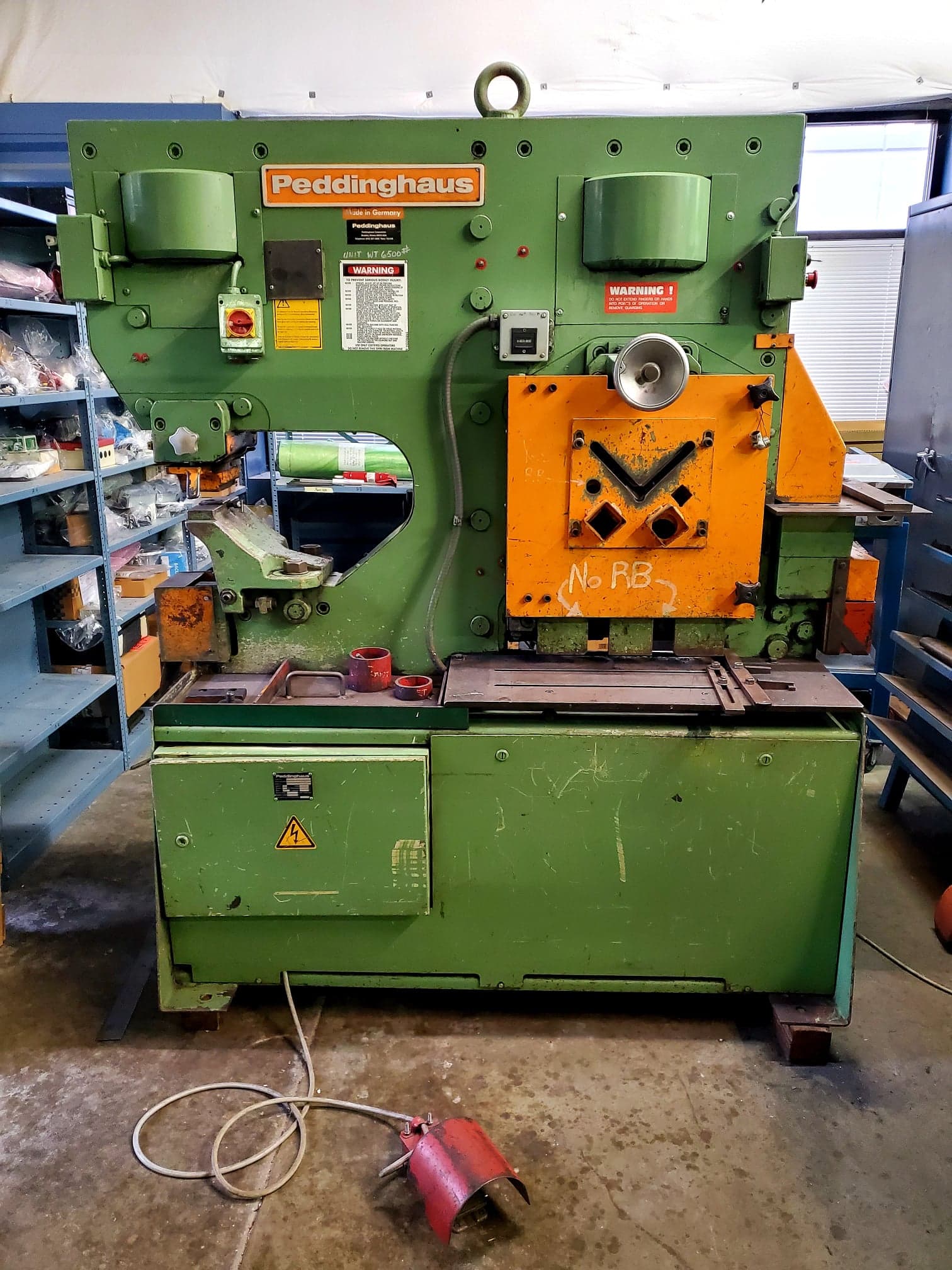 Within the dynamic manufacturing landscape, the metal fabrication industry is in the midst of a profound transformation driven by the Fourth Industrial Revolution. This revolution is driven by the integration of digital technologies into nearly every aspect of industrial processes, which is reshaping the way we design, produce, and consume various goods.
Within the dynamic manufacturing landscape, the metal fabrication industry is in the midst of a profound transformation driven by the Fourth Industrial Revolution. This revolution is driven by the integration of digital technologies into nearly every aspect of industrial processes, which is reshaping the way we design, produce, and consume various goods.
For anyone involved in the business of metal fabrication, embracing the unique opportunities presented by the Fourth Industrial Revolution is necessary to stay competitive in the evolving market and thrive when faced with challenges. Keep reading to learn more about the Fourth Industrial Revolution, including the impacts it has had on the metal fabrication industry.
Building on Innovations Throughout History
Before we get into the specific characteristics of the Fourth Industrial Revolution, it’s essential to understand the preceding revolutions and the way they transformed manufacturing in the past.
First Industrial Revolution
The First Industrial Revolution, beginning in the mid-to-late 18th century, harnessed the power of water, steam, and coal to mechanize production processes. It began in Britain and then spread to other parts of the world.
Innovations in iron production, including new fuel sources, the puddling process, the cast iron blowing cylinder, and the rolling mill, made it easier and less expensive to produce iron products.
Second Industrial Revolution
The advent of the Second Industrial Revolution, also known as the Technological Revolution, occurred around 1870 when Henry Bessemmer’s new steel manufacturing method became widely available. The Bessemer process involved a new type of furnace, which allowed manufacturers to remove impurities from molten iron in large quantities, leading to the mass production of steel.
This time period, which spanned until the beginning of World War I, also involved the establishment of the machine tool industry, the development of methods to manufacture interchangeable parts, and the widespread adoption of electrical power, telegraphs, railroad networks, and telephone lines.
Third Industrial Revolution
The onset of the Third Industrial Revolution, also known as the beginning of the Information Age, is linked to the development of the transistor in 1947. The latter half of the 20th century saw a transformation in the way information is stored, processed, and shared. New electronic devices such as computers allowed aspects of production to be automated, creating ripple effects throughout every sector of the manufacturing industry.
What Is the Fourth Industrial Revolution?
The Fourth Industrial Revolution, sometimes called Industry 4.0, builds upon the innovations of the 20th century. It’s characterized by the seamless integration of physical and digital technologies, transforming traditional manufacturing processes into smart, connected, and highly efficient systems. With regard to the metal fabrication industry, this means a departure from conventional production methods and the adoption of cutting-edge technologies that have redefined the production cycle.
 Transforming the Metal Fabrication Industry
Transforming the Metal Fabrication Industry
- Automation and robotics: Advanced robotics systems can handle complex manufacturing tasks with precision and speed. Not only does this improve efficiency and quality, but it also reduces errors and waste.
- The Internet of Things (IoT): The IoT connects various machines, devices, and sensors into a centralized system, enabling real-time monitoring and data analysis. This gives manufacturers insight into equipment performance, maintenance needs, and optimal production schedules.
- Artificial intelligence: AI-powered systems are able to analyze large amounts of data, helping engineers create more innovative and efficient products.
- 3D printing: 3D printing allows for the creation of customized, lightweight metal components and intricate, complex structures that would be difficult to create with traditional methods.
Challenges, Opportunities, and Human Ingenuity
The Fourth Industrial Revolution comes with both valuable opportunities and unique challenges for metal fabricators. The initial investment in advanced technologies can be significant, requiring a strategic approach to ensure a good return on investment. Furthermore, the workforce requirements are changing, with an increased demand for employees who can manage these sophisticated systems.
Despite the difficulties, this time of innovation also presents significant opportunities. Manufacturers who adapt to the changing landscape and invest wisely in modern technologies can gain a competitive edge by providing faster production, higher quality products, and innovative solutions.
As we discuss the technological advancements that have come with the Fourth Industrial Revolution, it’s vital to recognize the continuing importance of human expertise when it comes to metal fabrication. While automation and AI enhance efficiency, human ingenuity is still irreplaceable. Skilled workers remain essential for programming and maintaining machinery, interpreting data, and contributing creativity.
Innovative Technologies from Sanson Machinery
If you’re looking for ways to gain a competitive edge, look no further than Sanson Machinery. Our innovative metal fabrication equipment, including CNC machines, ensures you can create high-quality products with speed and efficiency.
